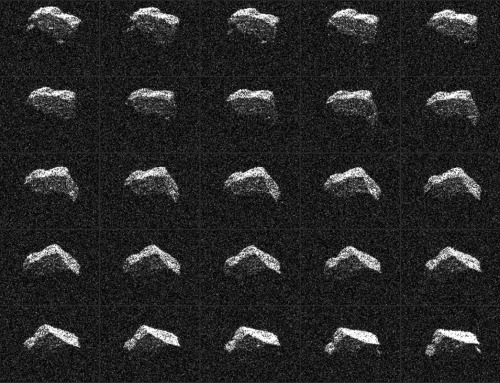Your gateway to endless inspiration
Planetary Defense - Blog Posts
Here’s What You Need to Know About Near-Earth Objects
Our solar system is littered with asteroids and comets, and sometimes they get a little close to Earth. But no need to worry! This happens all the time. When an asteroid or comet could come close to our planet, it’s known as a near-Earth object – aka NEO.
But how close is “close”?

A near-Earth object is defined as an object that could pass by our Earth within 30 million miles. We begin to keep close watch on objects that could pass within 5 million miles of our planet.

To put that into perspective, our Moon is only 238,900 miles away.
However unlikely an impact is, we want to know about all near-Earth objects. Our Planetary Defense Coordination Office maintains watch for asteroids and comets coming close to Earth. Along with our partners, we discover, catalog and characterize these bodies.

But what if one of these objects posed a threat?
We want to be prepared. That is why we are working on several deflection techniques and technologies to help protect our planet.

So next time that you hear of an asteroid passing “close” to Earth, know that it’s just one of many that we are tracking.

Here are 10 more things you should know about Planetary Defense.
Make sure to follow us on Tumblr for your regular dose of space: http://nasa.tumblr.com
Protecting our Home Planet 🌎

Did you ever wonder how we spots asteroids that may be getting too close to Earth for comfort? Wonder no more. Our Planetary Defense Coordination Office does just that. Thanks to a variety of ground and space based telescopes, we’re able to detect potentially hazardous objects so we can prepare for the unlikely threat against our planet.
What is a near-Earth object?

Near-Earth objects (NEOs) are asteroids and comets that orbit the Sun, but their orbits bring them into Earth’s neighborhood – within 30 million miles of Earth’s orbit.
These objects are relatively unchanged remnant debris from the solar system’s formation some 4.6 billion years ago. Most of the rocky asteroids originally formed in the warmer inner solar system between the orbits of Mars and Jupiter, while comets, composed mostly of water ice with embedded dust particles, formed in the cold outer solar system.
Who searches for near-Earth objects?

Our Near-Earth Object (NEO) Observations Program finds, tracks and monitors near-Earth asteroids and comets. Astronomers supported by the program use telescopes to follow up the discoveries to make additional measurements, as do many observatories all over the world. The Center for Near-Earth Object Studies, based at our Jet Propulsion Laboratory, also uses these data to calculate high-precision orbits for all known near-Earth objects and predict future close approaches by them to Earth, as well as the potential for any future impacts.
How do we calculate the orbit of a near-Earth object?

Scientists determine the orbit of an asteroid by comparing measurements of its position as it moves across the sky to the predictions of a computer model of its orbit around the Sun. The more observations that are used and the longer the period over which those observations are made, the more accurate the calculated orbit and the predictions that can be made from it.
How many near-Earth objects have been discovered so far?

At the start of 2019, the number of discovered NEOs totaled more than 19,000, and it has since surpassed 20,000. An average of 30 new discoveries are added each week. More than 95 percent of these objects were discovered by NASA-funded surveys since 1998, when we initially established its NEO Observations Program and began tracking and cataloguing them.
Currently the risk of an asteroid striking Earth is exceedingly low, but we are constantly monitoring our cosmic neighborhood. Have more questions? Visit our Planetary Defense page to explore how we keep track of near-Earth objects.
Make sure to follow us on Tumblr for your regular dose of space: http://nasa.tumblr.com.